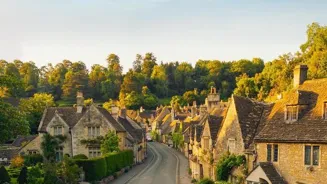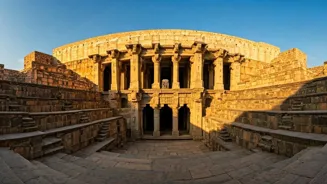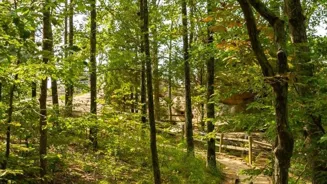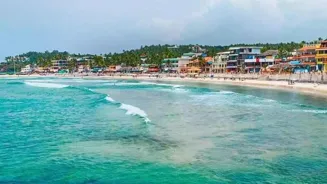Unveil India's historical wonders! From UNESCO sites to royal palaces, explore 10 captivating destinations that narrate India's vibrant past. Venture into the ancient ruins of Hampi, witness the Taj Mahal's
eternal love in Agra, and stroll through the historical melting pot of Delhi. Discover Jaipur's royal grandeur, Khajuraho's temple art, and the rock
India, a land steeped in history and culture, offers a treasure trove of destinations for those fascinated by the past. From ancient ruins to majestic forts and palaces, the country boasts a rich heritage that resonates through its historical sites.
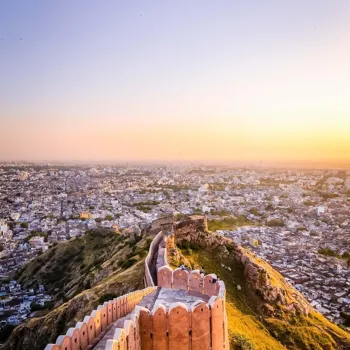
Whether you are an avid history buff or simply curious to explore the remnants of bygone eras, India has something to offer everyone. Here are 10 captivating destinations that will transport you back in time and provide a fascinating glimpse into the country's vibrant past.
Hampi, Karnataka: A UNESCO World Heritage Site
Hampi, a UNESCO World Heritage Site located in Karnataka, is a mesmerizing destination that transports visitors back to the glorious era of the Vijayanagara Empire.
Once the capital of one of the largest and most powerful Hindu empires in India, Hampi is now a captivating ruin city dotted with magnificent temples, royal complexes, and bustling marketplaces. The sheer scale and architectural grandeur of Hampi's monuments are awe-inspiring.
Exploring the Virupaksha Temple, the iconic stone chariot at Vijaya Vittala Temple, and the royal enclosure is a must for history enthusiasts.
Hampi's landscape, characterized by its boulder-strewn hills and lush green fields, adds to the allure of this historical marvel.
The best time to visit Hampi is during the cooler months, from October to March, when the weather is pleasant for exploring the ruins. Local eateries offer delicious vegetarian cuisine, allowing you to savor the flavours of Karnataka while you immerse yourself in the history of Hampi.
Discovering the stories behind the stones and unraveling the mysteries of the Vijayanagara Empire is a rewarding experience for any history lover.
Agra, Uttar Pradesh: Home to the Taj Mahal
Agra, situated in Uttar Pradesh, is synonymous with the Taj Mahal, one of the most iconic monuments in the world and a symbol of eternal love. Built by Mughal Emperor Shah Jahan in memory of his beloved wife Mumtaz Mahal, the Taj Mahal is a breathtaking masterpiece of architecture and artistry.
However, Agra has more to offer than just the Taj Mahal. The Agra Fort, a UNESCO World Heritage Site, is a magnificent red sandstone fort that served as the main residence of the Mughal emperors for generations.
Exploring the fort's intricate courtyards, palaces, and mosques provides a fascinating glimpse into the lives of the Mughal rulers. Fatehpur Sikri, another UNESCO World Heritage Site located near Agra, is a deserted city built by Emperor Akbar.
Its well-preserved structures, including the Buland Darwaza and the Jama Masjid, offer a unique insight into Mughal architecture and urban planning. The best time to visit Agra is during the winter months, from October to March, when the weather is cool and pleasant.
Consider a visit to Mehtab Bagh for an iconic moonlit view of the Taj Mahal. Agra is truly a city where history comes alive.
Delhi: The Capital of India – A Historical Melting Pot
Delhi, the capital of India, has been a witness to the rise and fall of numerous empires, each leaving its indelible mark on the city's rich and diverse history.
From the ancient ruins of Qutub Minar to the majestic Red Fort, Delhi is home to a plethora of historical sites that offer a captivating journey through time. The Qutub Minar, a UNESCO World Heritage Site, is a towering minaret that showcases the architectural prowess of the Delhi Sultanate.
Humayun's Tomb, another UNESCO World Heritage Site, is a stunning precursor to the Taj Mahal.
Exploring the narrow lanes of Old Delhi, with its bustling markets and historical mosques, is an experience in itself.
India Gate and Rashtrapati Bhavan showcase the elegance of Lutyens' Delhi, built during British rule. The National Museum in Delhi houses a vast collection of artifacts that represent India's rich cultural heritage.
Delhi is a city of contrasts, where ancient history blends seamlessly with modern life. The ideal time to visit Delhi is during the cooler months, from October to March. Each monument narrates chapter of India's complex and enthralling story.
Jaipur, Rajasthan: The Pink City of Royal Grandeur
Jaipur, the capital city of Rajasthan, is known as the "Pink City" due to the distinctive pink hue of its buildings. Founded by Maharaja Sawai Jai Singh II, Jaipur is a testament to Rajputana's valor and architectural brilliance.
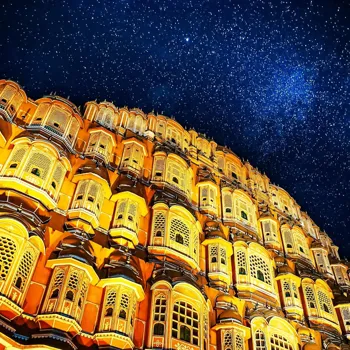
The city is dotted with magnificent forts, palaces, and temples, each reflecting the royal grandeur and opulence of its past rulers. The Amber Fort, a UNESCO World Heritage Site, is a breathtaking fort that combines Hindu and Mughal architectural styles.
The Hawa Mahal, or Palace of Winds, is an iconic structure with its intricate latticework and numerous windows, which allowed the royal women to observe street festivities without being seen.
The City Palace, the former residence of the Maharaja of Jaipur, is a sprawling complex that houses museums, courtyards, and exquisite artwork. Jantar Mantar, a UNESCO World Heritage Site, is an astronomical observatory built by Maharaja Jai Singh II.
The best time to visit Jaipur is during the winter months, from October to March, when the weather is pleasant for exploring the city. Jaipur encapsulates the regal charm of Rajasthan.
Khajuraho, Madhya Pradesh: Temples of Art and Architecture
Khajuraho, located in Madhya Pradesh, is renowned for its magnificent temples adorned with intricately carved sculptures that depict various aspects of life, including the famous Kama Sutra.
Built by the Chandela dynasty between the 9th and 11th centuries, the Khajuraho temples are recognized as a UNESCO World Heritage Site. The temples are divided into three groups: Western, Eastern, and Southern.
The Western Group is the most prominent and features the Kandariya Mahadeva Temple, the largest and most ornate temple in Khajuraho.
The sculptures on the temples are renowned for their artistic detail and explicit depictions of human emotions and relationships.
While the erotic sculptures are the most famous, they represent only a small fraction of the artwork. The beauty of the sculptures lies in the way they capture the essence of life, showcasing the beliefs, customs, and traditions of the time.
The best time to visit Khajuraho is during the winter months, from October to March, when the weather is conducive to temple exploration. Khajuraho offers a mesmerizing glimpse into the artistic and cultural heritage of India.
Ajanta and Ellora Caves, Maharashtra: Ancient Rock-Cut Marvels
The Ajanta and Ellora Caves in Maharashtra are UNESCO World Heritage sites renowned for their ancient rock-cut caves decorated with intricate sculptures and paintings.
The Ajanta Caves consist of 30 Buddhist cave temples carved into the rock cliffs, dating back to the 2nd century BCE to the 6th century CE. The caves are famous for their stunning murals that depict scenes from the Jataka tales, stories of the Buddha's past lives.
These paintings are a significant source of information about ancient Indian art, culture, and religious beliefs.
The Ellora Caves comprise 34 rock-cut temples representing Buddhism, Hinduism, and Jainism.
The caves were carved between the 6th and 10th centuries CE, showcasing religious harmony in ancient India. The most impressive structure at Ellora is the Kailasa Temple (Cave 16), a monolithic rock-cut temple dedicated to Lord Shiva.
The temple is an engineering marvel and a testament to the skill of ancient Indian artisans. The best time to visit Ajanta and Ellora Caves is during the winter months, from October to March, when the climate is pleasant.
These sites offer a captivating experience into the world of ancient Indian art and architecture.
AI Generated Content. Glance/InMobi shall have no liability for the content